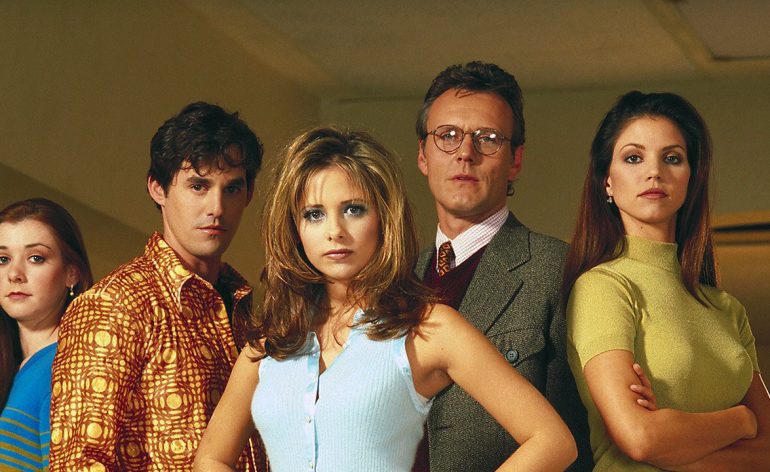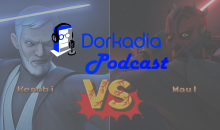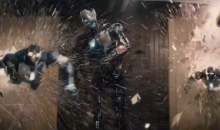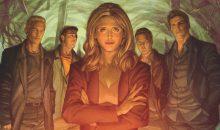Buffy the Vampire Slayer: 20 Years of Bite
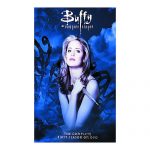
The box that started it all.
Into every generation…
I got into Buffy the Vampire Slayer around 2002. Back when I still owned a TV. Netflix was DVD-only (and it’d be a year before I signed up for the service). DVD box sets were all the rage among my friends, and one of them lent me a small blue volume. Buffy the Vampire Slayer: Season One.
We didn’t watch the first episode right away. My friend instead chose episode three “Witch” as the first one to watch. “Witch” (ranked #77 on Vox’s list) told the story of a mother trying to relive her high school days…by possessing her daughter’s body. I was instantly drawn in to the story through its dialogue. In Buffy speak, series creator Joss Whedon invented a dialogue that was simultaneously idiosyncratic and natural. The way his characters spoke was memorable and quotable. I wanted my characters to speak like that.
I watched a lot of Buffy that year. Went through all my friend’s DVDs and more, when the last two seasons were released. When I was through, I turned right around and re-watched the series…more than once. My re-watches tended to start with Season Three: the Faith season. Season One was a bit too clunky, and although I loved Spike and Drusilla, I felt Season Three was when the show hit its stride.
Keeping it in the Scoobies
Over seven years, Buffy the Vampire Slayer redefined what it meant to be a teenager on television. Buffy, Willow, Xander, Giles, Anya, Tara, Dawn, Cordelia, Oz. They fought as a team and as individuals. They quipped, but miscommunicated more often than not. Their pain and angst weren’t hidden away, but showcased instead. It mirrored my own experiences, first in high school and then in community college (high school 2.0). My friends didn’t fight monsters, but we had infighting and love and hate and jealously as much as the characters on the show.
With Buffy, Joss Whedon took his 1992 eponymous movie and eclipsed it. I remember seeing Buffy the Vampire Slayer at the dollar theater years before, although it wasn’t too memorable. I enjoyed it more for Paul Reubens’ return to acting than anything else. TV; however, gave both Buffy and Joss a second chance. On the small screen, Joss was able to create not one, not two, but a host of strong, flawed female characters. As they grew stronger and older, things only got harder for Buffy, Willow and the others. Actors Sarah Michelle Gellar and Alyson Hannigan showed us how to fight and how to win. Buffy and Willow were career-defining roles and rightly so. Buffy the Vampire Slayer was a show where the two strongest people in the room were women. It was genre-defying back then. It’s still amazing now.
I will follow you into the apocolypse
From Buffy sprung my love of Joss and his penchant for cooking up puppy soup. I watched all five seasons of Angel, which bested Buffy for character development. Many characters introduced on Buffy had their arcs continued on Angel, including Cordelia, Spike, Faith, and Wesley. Wesley in particular had the greatest arc of anyone on either show, as his character evolved from nebbish Brit to well-intentioned Judas. While it didn’t go the seven-season distance, Angel managed to pack quite a punch into its shorter series run.
I’ve watched (and enjoyed) other Whedon projects too. Dollhouse. Serenity. The Avengers. The Buffy Season Eight comic series. The running theme through everything is Joss’ dialogue. Idiosyncratic, natural, and instantly recognizable. With his words, Joss told up that he heard our pain and experiences of growing up. He also showed us how that pain had value and could be turned into something positive. Like many others, I discovered the show at a low point in my life. Over the years I’ve held on to those characters, their banter, and that show. It resonated in 2002, and it still does today.

